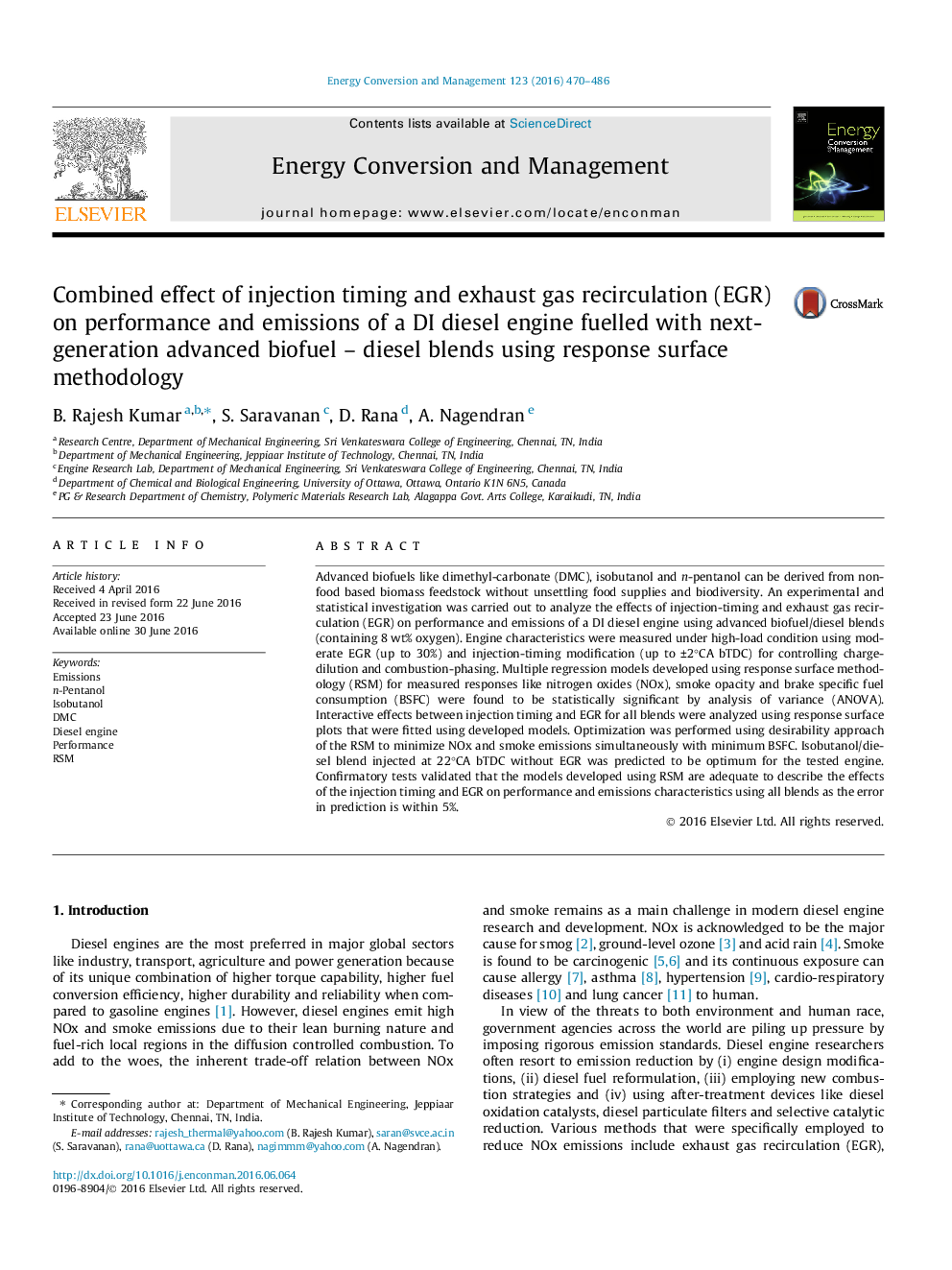| Article ID | Journal | Published Year | Pages | File Type |
|---|---|---|---|---|
| 760149 | Energy Conversion and Management | 2016 | 17 Pages |
•Three advanced biofuels isobutanol, n-pentanol and DMC were used.•Optimization was performed using desirability approach of the RSM.•Fuel, EGR and injection timing were factors used to minimize NOx, smoke and BSFC.•Interactive effects between injection timing and EGR for all blends were analyzed.•RSM could model, predict, optimize engine characteristics with reasonable accuracy.
Advanced biofuels like dimethyl-carbonate (DMC), isobutanol and n-pentanol can be derived from non-food based biomass feedstock without unsettling food supplies and biodiversity. An experimental and statistical investigation was carried out to analyze the effects of injection-timing and exhaust gas recirculation (EGR) on performance and emissions of a DI diesel engine using advanced biofuel/diesel blends (containing 8 wt% oxygen). Engine characteristics were measured under high-load condition using moderate EGR (up to 30%) and injection-timing modification (up to ±2°CA bTDC) for controlling charge-dilution and combustion-phasing. Multiple regression models developed using response surface methodology (RSM) for measured responses like nitrogen oxides (NOx), smoke opacity and brake specific fuel consumption (BSFC) were found to be statistically significant by analysis of variance (ANOVA). Interactive effects between injection timing and EGR for all blends were analyzed using response surface plots that were fitted using developed models. Optimization was performed using desirability approach of the RSM to minimize NOx and smoke emissions simultaneously with minimum BSFC. Isobutanol/diesel blend injected at 22°CA bTDC without EGR was predicted to be optimum for the tested engine. Confirmatory tests validated that the models developed using RSM are adequate to describe the effects of the injection timing and EGR on performance and emissions characteristics using all blends as the error in prediction is within 5%.
Graphical abstractFigure optionsDownload full-size imageDownload as PowerPoint slide
